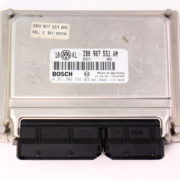Learn datacenter principles from ISO 26262 standards for automotive safety engineering

Automotive ECU (engine control unit)
In my everyday life, I trust that if I make a panic stop, my car’s antilock brake system will work. The hardware, software, and servos will work together to ensure that my wheels don’t lock up—helping me avoid an accident. If that’s not sufficient, I trust that the impact sensors embedded behind the front bumper will fire the airbag actuators with the correct force to protect me from harm, even though they’ve never been tested. I trust that the bolts holding the seat in its proper place won’t shear. I trust the seat belts will hold me tight, and that cargo in the trunk won’t smash through the rear seats into the passenger cabin.
Engineers working on nearly every automobile sold worldwide ensure that their work practices conform to ISO 26262. That standard describes how to manage the functional safety of the electrical and electronic systems in passenger cars. A significant portion of ISO 26262 involves ensuring that software embedded into cars—whether in the emissions system, the antilock braking systems, the security systems, or the entertainment system—is architected, coded, and tested to be as reliable as possible.
I’ve worked with ISO 26262 and related standards on a variety of automotive software security projects. Don’t worry, we’re not going to get into the hairy bits of those standards because unless you are personally designing embedded real-time software for use in automobile components, they don’t really apply. Also, ISO 26262 is focused on the real-world safety of two-ton machines hurtling at 60-plus miles per hour—that is, things that will kill or hurt people if they don’t work as expected.
Instead, here are five IT systems management ideas that are inspired by ISO 26262. We’ll help you ensure your systems are designed to be Reliable, with a capital R, and Safe, with a capital S.
Read the list, and more, in my article for HP Enterprise Insights, “5 lessons for data center pros, inspired by automotive engineering standards.”



